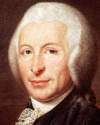
On 28 May 1738, a French physician was born that promoted a law for a humane, mechanized form of execution by beheading, and that it should be used for commoners or nobles alike.
When the idea was eventually adopted, his name became associated with the device, although his only involvement was to suggest that a machine be used. He was actually not involved in its specific design or its construction.
An article in Chambers’ Edinburgh Journal explains more about what was and what was not contributed by this man. It may revise your knowledge of him.

On 28 May 1807, Louis Agassiz was born, who was a giant of 19th-century natural history study. He made major contributions to modern knowledge of geology, paleontology, and zoology. Agassiz’s fame in America was largely as a popularizer of natural history and teacher of advanced students. He founded the Museum of Comparative Zoology at Harvard. The Smithsonian Institution and National Academy of Sciences benefited from his leadership to professionalize science. As a life-long opponent of the theory of evolution, Agassiz affirmed the magnificence of God’s plan to all who would “study nature, not books.” Today's book pick is: Louis Agassiz: A Life in Science, by Edward Lurie. Published by Johns Hopkins University Press, Stephen Jay Gould called it, “By far the best work on this central figure in the history of American biology.”
It is available from Amazon, typically about New from $24.00. Used from $2.16. (As of earlier time of writing - subject to change.)
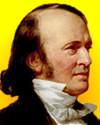 | America, so far as her physical history is concerned, has been falsely denominated the New World. Hers was the first dry land lifted out of the waters, hers the first shore washed by the ocean that enveloped all the earth beside; and while Europe was represented only by islands rising here and there above the sea, America already stretched an unbroken line of land from Nova Scotia to the Far West. |
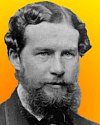 | If we succeed in giving the love of learning, the learning itself is sure to follow. |
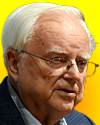 | To use Newton’s words, our efforts up till this moment have but turned over a pebble or shell here and there on the beach, with only a forlorn hope that under one of them was the gem we were seeking. Now we have the sieve, the minds, the hands, the time, and, particularly, the dedication to find those gems—no matter in which favorite hiding place the children of distant worlds have placed them. [Co-author with Dava Sobel.] |
| Before you look at today's web page, see if you can answer some of these questions about the events that happened on this day. Some of the names are very familiar. Others will likely stump you. Tickle your curiosity with these questions, then check your answers on today's web page. | |
| Births | |
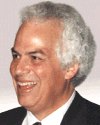 | Stanley Ben Prusiner, born 28 May 1942, is an American neurologist whose discovery (1982) of the prions as a new biological principle of infection won him the 1997 Nobel Prize for Physiology or Medicine. What are prions, and why are they unique among infectious agents? |
 | A French physician born 28 May 1738 promoted a law for a “machine that beheads painlessly” for all executions, treating nobles and commoners alike, be carried out by means of such a machine. Such consideration was no longer to be the prerogative of nobles. After a series of experiments on cadavers taken from a public hospital, the first of these machines was put up in the Place de Grève in Paris on 4 Apr 1792. Can you name this physician? |
| Deaths | |
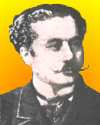 | When Paul Émile Lecoq de Boisbaudran died on 28 May 1912, he left the world knowledge of the three new elements he discovered: gallium, samarium and dysprosium. He spent fifteen years examining minerals using his own improvements on the methods originated by Kirchoff. What device did he use to discover new elements? |
| Events | |
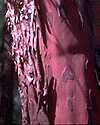 | On 28 May 1991 a patent was issued for the “Production of taxol or taxol-like compounds in cell culture.” This miracle drug was an important medical break-through. However, it only existed naturally in the bark of the Pacific Yew, Taxus Brevifolia, found solely in the Pacific Northwest, where the number of trees is limited. For treatment of what medical condition was taxol found very useful? |
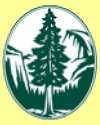 | On 28 May 1892, the Sierra Club was organized at a meeting in San Francisco. “to explore, enjoy, and rendure accessible the mountain regions of the Pacific Coast; to publish authentic information concerning them,” and “to enlist the support and cooperation of the people and government in preserving the forests and other natural features of the Sierra Nevada.” Who was elected as the first President of the Sierra Club? |
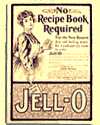 | On May 28 or a certain year, Jell-o was introduced. Pearl B. Wait, a carpenter and cough medicine manufacturer from LeRoy, N.Y., produced varieties in strawberry, raspberry, orange and lemon fruit flavours, named Jell-O by his wife, May Davis Wait. In what decade was Jell-o introduced? |
Fast answers for the previous newsletter for May 27: DDT • Cockcroft-Walton generator, produced large numbers of particles at lower energies (the first atom-smasher) • electron microscope • incandescent light bulb • 3M, Scotch.
 If you enjoy this newsletter, the website, or wish to offer encouragement or ideas, please send feedback by using your mail reader Reply button.
If you enjoy this newsletter, the website, or wish to offer encouragement or ideas, please send feedback by using your mail reader Reply button. Your click on a Facebook, StumbleUpon, or other social button on the site webpages is also a welcome sign of appreciation. Thank you for using them.
© This newsletter is copyright 2020 by todayinsci.com. Please respect the Webmaster's wishes and do not put copies online of the Newsletter — or any Today in Science History webpage. (If you already have done so, please remove them. Thank you.) Offline use in education is encouraged such as a printout on a bulletin board, or projected for classroom viewing. Online, descriptive links to our pages are welcomed, as these will provide a reader with the most recent revisions, additions and/or corrections of a webpage. For any other copyright questions, please contact the Webmaster by using your mail reader Reply button.
--
If you do not want to receive any more newsletters, Unsubscribe
To update your preferences and to unsubscribe visit this link
Executive Real Estate Business Class
-
"It was like a man with wings. It wasn't like anything you'd see on TV or in a monster movie." ...
About the publisher
Search This Blog
Blog Archive
-
▼
2021
(585)
-
▼
May
(62)
- Tonight: Back-to-Back Premieres
- On This Day for May 31 - Adolf Eichmann hanged, Cl...
- Newsletter for Monday 31 May.
- On This Day for May 30 - Joan of Arc burned at the...
- TONIGHT at 8/7c: The Tulsa Race Massacre Revealed
- Newsletter for Sunday 30 May.
- Bundle Up For The Summer!
- On This Day for May 29 - Mount Everest summit reac...
- Newsletter for Saturday 29 May.
- On This Day for May 28 - Amnesty International fou...
- Newsletter for Friday 28 May.
- On This Day for May 27 - Founding of St. Petersbur...
- Newsletter for Thursday 27 May.
- On This Day for May 26 - Martin Luther declared a ...
- Newsletter for Wednesday 26 May.
- On This Day for May 25 - U.S. Constitutional Conve...
- Newsletter for Tuesday 25 May.
- Behind Every Empire There’s a Titan
- On This Day for May 24 - Opening of the Brooklyn B...
- On This Day for May 23 - Tibet annexed by China, C...
- Newsletter for Sunday 23 May.
- The Tulsa Race Massacre, 100 Years Later
- On This Day for May 22 - Roman Emperor Constantine...
- Newsletter for Saturday 22 May.
- On This Day for May 21 - First nonstop solo transa...
- Newsletter for Friday 21 May.
- On This Day for May 20 - U.S. Homestead Act signed...
- Newsletter for Thursday 20 May.
- On This Day for May 19 - Ringling Bros. Circus for...
- Newsletter for Wednesday 19 May.
- Learning This Fun Doesn't Need A Summer Break
- On This Day for May 18 - Eruption of Mount St. Hel...
- Newsletter for Tuesday 18 May.
- On This Day for May 17 - School segregation outlaw...
- Newsletter for Monday 17 May.
- Follow the trail of 400 facts!
- On This Day for May 16 - Warsaw Ghetto Uprising su...
- Newsletter for Sunday 16 May.
- On This Day for May 15 - Edith Cresson appointed F...
- Newsletter for Saturday 15 May.
- On This Day for May 14 - Declaration of Israel's s...
- Newsletter for Friday 14 May.
- On This Day for May 13 - U.S. declaration of war o...
- Newsletter for Thursday 13 May.
- Ridiculous History You Want To Know About!
- On This Day for May 12 - First flight over the Nor...
- Newsletter for Wednesday 12 May.
- On This Day for May 11 - “New Rome” established by...
- Newsletter for Tuesday 11 May.
- On This Day for May 10 - Nelson Mandela inaugurate...
- Newsletter for Monday 10 May.
- On This Day for May 9 - Fourth and final voyage of...
- On This Day for May 7 - Theatre Royal opened, Pyot...
- On This Day for May 5 - Mexican victory in the Bat...
- On This Day for May 4 - Four students shot at Kent...
- On This Day for May 3 - Margaret Thatcher elected ...
- Newsletter for Monday 3 May.
- TONIGHT: The Bin Laden Raid, Revealed
- On This Day for May 2 - Lou Gehrig's 2,130-game st...
- Newsletter for Sunday 2 May.
- On This Day for May 1 - May Day founded, Arthur We...
- Newsletter for Saturday 1 May.
-
▼
May
(62)
-
Blogroll
-
About
HistoryFact










0 comments:
Post a Comment